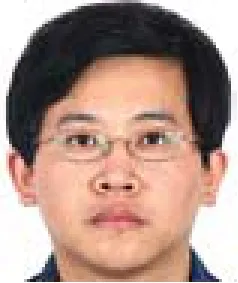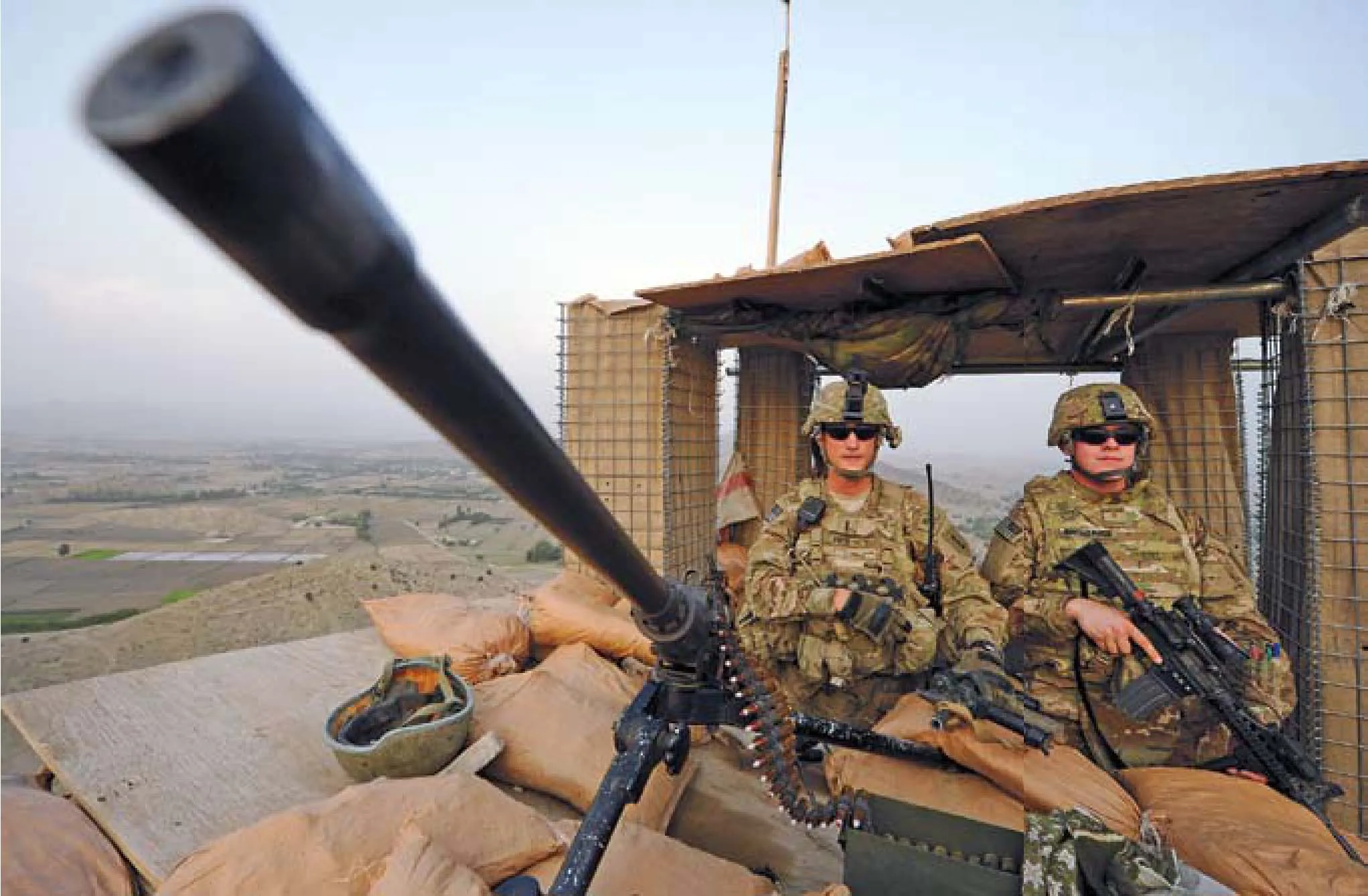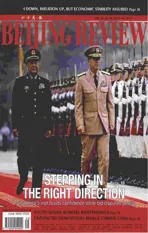Exiting Afghanistan
2011-10-14ByLIYAN
By LI YAN
Exiting Afghanistan
By LI YAN
The United States prepares to begin withdrawing troops from Afghanistan
U.S. President Barack Obama outlined steps for the United States’ withdrawal from Afghanistan on June 23.This strategic adjustment comes at a critical juncture as the United States re-evaluates the war in Afghanistan,which has been ongoing for almost a decade.
A comprehensive plan
The United States’ exit strategy involves much more than removing troops from Afghanistan. It is a comprehensive plan covering military, political and diplomatic aspects of the U.S. mission in the country.
Before the end of this year, the United States will pull out 10,000 soldiers. By September 2012, another 23,000 will be withdrawn. This will mark the removal of all the troops added by Obama’s troop surge strategy in 2009. The United States will gradually withdraw according to developments on the ground and will ultimately shift its role from an active to a supporting one. By 2014, Afghanistan’s security forces will play the leading role in defending the nation.
Politically, the troop withdrawal has the potential to accelerate Afghanistan’s national reconciliation. Already, the United States has shifted away from its steadfast policy of non-communication with the Taliban. Obama has said the United States is willing to negotiate with the Taliban.In order for this to happen, he said, the Taliban would have to give up violent means of achieving its goals, part ways with Al Qaeda and obey Afghanistan’s Constitution. The United States has held several talks with the Taliban in Qatar and Germany since the beginning of this year.

Diplomatically, the plan will continue to press Pakistan to step up anti-terrorist efforts. Obama has clearly stated that the United States will urge Pakistan to intensify strikes against extremists and terrorists within its borders and will not tolerate terrorists using Pakistan as a safe haven.At the same time, the United States is busy drawing Afghanistan’s neighboring countries to its side to solve problems in the conflict-ridden country. For instance,Richard Haass, President of the U.S.Council on Foreign Relations, has recently proposed the “six-plus-two” approach,involving China, Russia, Saudi Arabia,Iran, India and Pakistan plus America and Afghanistan, to address the Afghanistan issue.
The U.S. withdrawal is a fi xed agenda,but exactly how it will play out has yet to be seen and is dif fi cult to anticipate. In a speech on the Afghanistan troop surge at the U.S. Military Academy at West Point in December 2009, Obama said a withdrawal would start in July 2011.Now, Obama is ful fi lling his commitment.But many U.S. military officials, including David Petreaus, the top commander in Afghanistan, have doubts about the pullout plan. They believe a widespread and speedy withdrawal may have a negative impact on military operations in Afghanistan at a time when the Taliban could rally its forces and strike back.

Multiple considerations
Obama’s withdrawal plan is mainly the result of the United States’ domestic dif fi culties. The U.S. economic recovery isfeeble, and the federal government wants to reduce its deficit by any means. The budget of every department of the U.S.Government is faced with tightening pressure. As one of the biggest spenders, the Department of Defense has been under mounting pressure to make cuts. There have been growing calls in the United States to slash military expenditure, and the war in Afghanistan, which costs billions of dollars annually, is a main target. Under these circumstances, the war has become increasingly unsustainable.

BOLSTERING TIES: New U.S. Secretary of Defense Leon Panetta (left) meets Afghan President Hamid Karzai in Kabul on July 9 during a trip to Afghanistan shortly after taking office

KEEPING ALERT:U.S. soldiers stand guard in a watch tower in east Afghanistan’s Khost Province on June 21
Moreover, as the 2012 presidential election approaches, Obama needs to provide results on the situation in Afghanistan.Since taking of fi ce in 2009, he has boosted U.S. troop strength in Afghanistan three times. As a result, the war has effectively become “Obama’s war” and a national security issue that will have a major impact on his efforts to seek re-election. A recent opinion poll showed nearly 70 percent of Americans demanded a withdrawal as soon as possible.
The changing international landscape is another important factor that has pushed Obama’s decision to withdraw. First of all, terrorist threats to the United States have fallen. This May, U.S. special forces killed Al Qaeda leader Osama Bin Laden in Pakistan. After a decade of fi ghting its war on terror, the United States had fi nally won a major victory. This forced terrorists to move their bases from Afghanistan and Pakistan to Yemen and parts of North Africa. So the importance of the war in Afghanistan to U.S. national security has declined.
Though public protests in the Middle East and North Africa have led to social unrest and, to some extent, disrupted U.S.global strategies, they reduced the appeal of Al Qaeda and other terrorist organizations, and struck at terrorists’ abilities to organize and recruit, to the advantage of U.S. anti-terrorist efforts.
Strategic intentions
The United States’ overall strategy on Afghanistan and South Asia deserves even greater attention than the withdrawal plan.Since the terrorist attacks on September 11,2001, the United States has sent 100,000 troops to Afghanistan. It is unlikely to give up its presence in South Asia, even as it begins decreasing its troop strength in Afghanistan.
The United States has stepped up efforts to forge an agreement on establishing strategic relations with Afghanistan,aiming to ensure its long-term and legal existence in the country. Since last year, it has invested billions of dollars in expanding military bases in Afghanistan. The United States obviously intends to maintain a military presence even after Afghan forces take over the brunt of security duties.
Moreover, the proposal of turning the “northern distribution network”—an important supply line for U.S. troops in Afghanistan—into a trade and energy corridor connecting Central Asia and South Asia has been under discussion for a long time. Given the United States’ growing dependence on Afghanistan’s neighbors in solving the Afghanistan issue, this proposal may be put into practice.
The U.S. plan to remove troops is not set in stone. It may be carried out as scheduled, or face many challenges that alter the timeframe.
For instance, the tide of the war may change. The Taliban has recently started its summer attacks, with the number of roadside bombings significantly increasing in recent weeks. The security situation in Afghanistan appears to be getting worse. The Taliban has also issued public statements saying it will increase attacks following the withdrawal of U.S. troops.
Negotiations between the United States and the Taliban are still up in the air. Although the United States has agreed to talks with the Taliban, its requirements may prevent those talks from achieving any results. The United States is also unwilling to accept one of the Taliban’s main demands—that all foreign troops should withdraw from Afghanistan, which will preclude reconciliation of any kind.
Worse still, the relationship between American leaders and Afghan President Hamid Karzai is strained at best. The United States continues to hammer Karzai for corruption within his administration and his poor governing ability. Karzai has often spoken out against U.S. presence in his country. If this relationship continues to fester, it will undoubtedly have a detrimental impact on Afghanistan’s future.
The United States is unlikely to give up its presence in South Asia, even as it begins decreasing its troop strength in Afghanistan
The author is an assistant research fellow with the Institute of American Studies at the China Institutes of Contemporary International Relations
